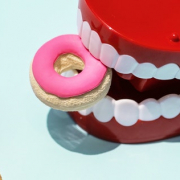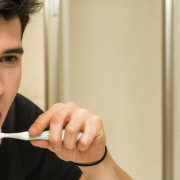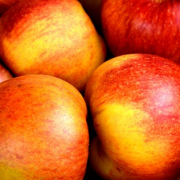How to stay cavity free this Halloween
Halloween is almost here, which means we will be facing the scariest, most terrifying, most horrifying of monsters: CAVITIES. With all the candy and sugar around, the formation of cavities is thriving, especially in children’s mouths. Since cancelling trick or treating is certainly out of the question, here are a couple of tips to help stay cavity free this Halloween.
Eat dinner before going trick or treating
Eating before going trick or treating leaves your children feeling
fuller longer, making them less likely to binge on candy afterwards.
Drink water
Drinking water definitely does not replace brushing teeth, but it helps
wash away some of the excess sugar and bacteria stuck in your child’s
mouth.
Sort through the candy
After trick or
treating, go through the candy with your children and let them separate
their favorite candies from their least favorite ones. The pile of
unwanted candy can already be discarded, preventing your kids from
eating candy just for the sake of it.
Set limits
With your children, decide the amount of candy they are allowed daily.
Limiting to 1 or 2 pieces of candy a day is reasonable and makes sure
your children are not eating too many sweets.
Restrict candy to lunch or dinnertime
Allow your kids to have a piece of candy after lunch or dinner as
dessert, to prevent them from snacking on sweets throughout the day.
Additionally, saliva levels are higher after meals, which helps wash
away some of the bacteria and eliminate plaque.
Brush teeth more thoroughly
Teach your children the importance of brushing and flossing, and
encourage them to brush an extra 2 minutes if they’ve eaten candy during
the day. They are going to have to work hard for that sugar!
Choose wisely
Sticky candies like caramels, or hard candies like lollipops take a
long time to dissolve, exposing teeth to sugar for longer periods of
time, and increase the risk of tooth decay. Safer options include
chocolate, sugar free gum and even powdery candies (which dissolve
quickly in the mouth).
What about braces?
Eating candy with braces doesn’t always have to be a nightmare! To keep
braces intact, avoid nuts, caramel, gum, popcorn and chewy candies.
Chocolate, soft candies and mints are safer options!
Get a dental cleaning
A dental cleaning is the safest and most foolproof way to make sure
your children’s teeth are clean and healthy, especially after Halloween.
In any case, we recommend that children and adults alike get a dental
cleaning every six months to ensure their oral hygiene is in top shape.
Click here to book an appointment for a dental cleaning online, or call us at 514.277.773.
Happy Trick or Treating!







